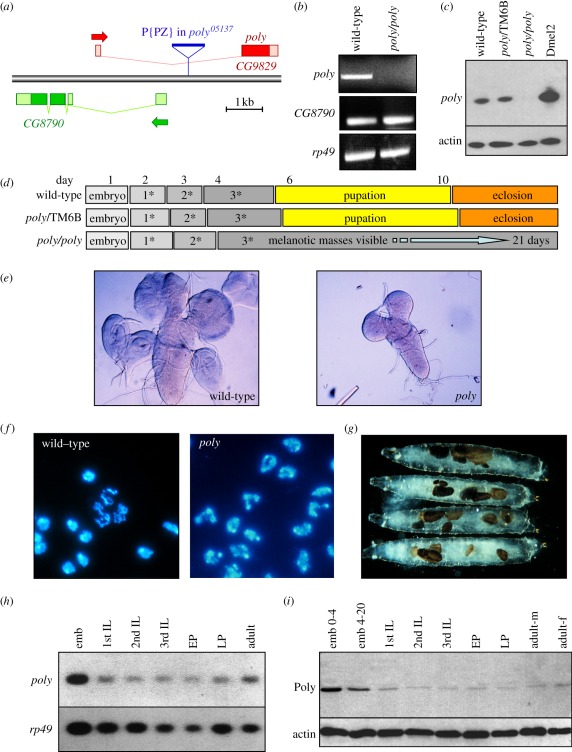Figure 1.
Characterization of the poly gene and mutant phenotype. (a) Gene map showing the P-element insertion in the first intron of poly. (b) RT-PCR from wild-type and homozygous poly third instar larvae demonstrating the absence of Poly in poly mutant animals. The level of CG8790 is unaffected in poly mutants. RP49 serves as a control. (c) Immunoblotting of extracts from wild-type, heterozygous and homozygous poly third instar larvae demonstrating the absence of Poly in poly mutant animals. Poly is also present in Dmel2-cultured Drosophila cells. (d) Developmental timing of wild-type, heterozygous and homozygous poly animals. (e) Third instar larval brain and imaginal discs dissected from wild-type and poly animals. Note the reduced brain size and absence of imaginal discs in the homozygous poly mutant. (f) DAPI staining of wild-type and poly larval neuroblasts. Note the abnormally shaped nuclei in the homozygous poly mutant. (g) Homozygous poly larvae develop melanotic masses during the third larval instar, which increase in number with time. (h,i) Expression analysis of poly mRNA and protein throughout development. Northern and immunoblotting of wild-type extracts at specific developmental stages showing Poly mRNA and protein expression levels. emb, embryo (0–4, 4–20 = age in hours); IL, instar larvae (1st, 2nd and 3rd); EP, early pupae; LP, late pupae; adult-m, adult males; adult-f, adult females.

